FLIR is doing just about everything it can to end our excuses for why we don’t have thermal imaging as part of our arsenals. They’re redefining what the cost of entry is and the quality you can expect there. Whether you’re diagnosing energy loss in a home, working as a home inspection pro, or maintaining equipment, thermal imaging likely has a very real use for you.
The FLIR C2 is the company’s entry-level full-featured thermal imaging camera. It’s a pocket-sized, lightweight unit that claims to be really powerful. I can attest to that. For most pro’s out there, you’re looking at the C2 as perhaps your first thermal imaging camera, so I’ll focus on those uses for now. Keep in the back of your mind that the FLIR C2 will have more powerful features that you can take advantage of as thermal imaging becomes a part of your everyday tool kit.
The C2 is a full-featured alternative for the iPhone 5/5S based FLIR One personal thermal imaging camera that came out last year. The basic idea was good, but it just didn’t pan out for entry-level pro use. The FLIR C2 is built around the same idea of size and portability. It’s now attached to a dedicated platform that only needs to be a thermal imaging camera.
First Impressions
FLIR C2 Key Specifications
- Screen: 3-inch, 320 x 240 pixel touchscreen
- IR Sensor: 80 x 60 pixels (4800 pixels)
- Visual Camera: 640 x 480 pixels
- Object Temperature Range: -10 C to 150 C (14 F to 304 F)
- Accuracy: +/- 2 C (3.6 F)
- Image Storage: At least 500 jpeg images
- Run Time: 2 hours
- Charge Time: 1 hr. 30 min.
- Weight: 4.64 ounces
- Price: $499
- Warranty: 2-year camera, 10-year thermal detector
For an entry-level thermal imaging camera, the FLIR C2 is pretty exciting. It boasts a much larger screen and better resolution than the FLIR TG165 Imaging IR Thermometer. The thermal image itself gets a huge boost from the MSX dual-lens system. One lens sees the thermal image. The other sees a visual image. The combination is a two image overlay that provides much greater detail than you would expect on a thermal imaging camera at this price point. Actually, the detail is much better than straight thermal images at almost any price point.
The FLIR C2 charges via Micro USB to USB (an AC adapter is also included). It also uses this USB connection to upload your images. That connection gets covered and looks to be effective at keeping out dust. The C2 consists of just two buttons: power and image capture. The image capture button is actually quite large, but pressing anywhere on it will take the picture.
A lanyard hole wraps up the physical features of this rather simple device. What hides inside that housing is a completely different story.
Playback of images, settings, and other options are found by just giving the C2’s screen a quick tap. There are a multitude of functions that can be found there, but here are what are likely to be the most useful. Others will require a deeper understanding of thermal imaging.
FLIR C2 Featured Setting Options
- Image Playback
- Image Selection: Thermal/Visual Overlay (MSX), Thermal, Visual
- Center Spot Temperature: On/Off
- Color: Iron, Rainbow, High Contrast Rainbow, Gray
- Lamp: On, Off, Flash
Basic users will likely want to leave most of the settings alone, save for the temperature units, date, and time. Those can be found under the settings tab in the menu. As you learn more about the power of thermal imaging and begin to integrate it into your daily work, I’d encourage you to explore the additional settings. They will help you realize even more of the power that the FLIR C2 offers!
Build Quality
I noticed two things immediately when I picked up the FLIR C2. First, this is a very lightweight unit. It’s so lightweight for its size that an unsuspecting person might think that it was missing some inner components. That’s both good and bad. Lighter weights tend to be a very good thing. Too light, however, and the user may think that it’s cheaply built. While it is surprisingly light, cheap components are not an issue with this model.
The second feature that was readily apparent is the almost completely encompassing rubber overmold. Only the lens cover, screen, and flash are not covered by it. The design brings the overmold further out than each of those components. Even if you do drop it, the uncovered parts are protected against a flat surface strike. Corners strikes may leave the screen vulnerable.
As I worked my way around the cell phone-sized FLIR C2, I found that there was a little bit of jiggle in the lens covers. It’s not the lenses themselves, just the protective covers.
When you first turn the FLIR C2 on, and again frequently during use, the unit will auto-calibrate to the conditions. This is a great feature to eliminate guesswork while you’re moving around the job site. As the unit calibrates, you’ll notice an audible clicking sound. This is presumably the thermal lens adjusting. As a photographer, I’m used to smooth, quiet lens adjustments. Noise on my camera is an indication that something is very wrong. That’s not the case with the FLIR C2, but the clicking noise may be disconcerting at first. It’s a characteristic that I’ve experienced on other thermal imaging devices as well.
Performance
If you’ve ever used thermal imaging before, the first thing that you’ll notice is the incredible image detail. I’m not talking about Apple Retina screen clear, but things you’ve never seen before in a thermal image pop out on the FLIR C2. The MSX overlaid visual image shows details that simple heat images don’t. Borders are obvious and it’s easy to see what you’re looking at. One thing that surprised me was the ability to read writing. I’ve never seen that in a thermal image before!
By default, the screen will have the IR temperature center point on, which I like. On the right hand side, it will also show you the high and low range of temps in the current picture. This is another nice feature if you’re trying to get a line on the hottest or coldest point in an area of concern.
Pro-Level Diagnostics
When it comes to a diagnosis for you as the pro, the thermal image by itself is going to be good enough in many situations. The visual layer adds detail that is nice for making the recognition easier. However, the real value of the MSX (thermal with visual) is when it comes to justifying your findings to a customer or manager. It is much easier to help them understand what is going on when they can identify everything in the picture.
FLIR offers its FLIR Tools software as a free download. You can generate reports, compare MSX to visual images, even make the same adjustments to the image that you could on the camera settings. My favorite feature is the ability to grab a point temperature reading anywhere on the image regardless of where the center point was. Another great one is live streaming video when connected via USB. The camera doesn’t actually capture video with the FLIR C2. You live stream what it sees using the software. It would take too much space to give you an exhaustive walk through the software, but check out the video overview here.
I ran into one issue in that my Windows 7 computer really didn’t like the C2 at first. After a quick email to FLIR, it took just a reset to factory settings (which did not affect the images on the camera) and it was instantly recognized. I should also note that the FLIR Tools software is not required to view the images. Once your computer sees the camera, you can pull them off just like you would a standard digital camera.
Price and Conclusions
The FLIR C2 is an incredible tool to get into thermal imaging. It’s a product that is well ahead of the market for the quality and performance you get at this price. There are other inexpensive (relatively speaking, of course) that are out there, but they’re going to be at a pretty significant disadvantage to the C2.
If the camera itself isn’t enough to convince you, the FLIR Tools software simply brings the C2 to another level. The combination of the two brings together a tool that, while entry-level, is absolutely for professionals in all sectors of the building and construction industry. Other thermal imaging cameras and add on devices don’t have that kind of professional level integration. If you’re looking to add thermal imaging to your business, the $499 FLIR C2 comes with my unreserved recommendation.
Note: The FLIR C3 basically replaces the C2

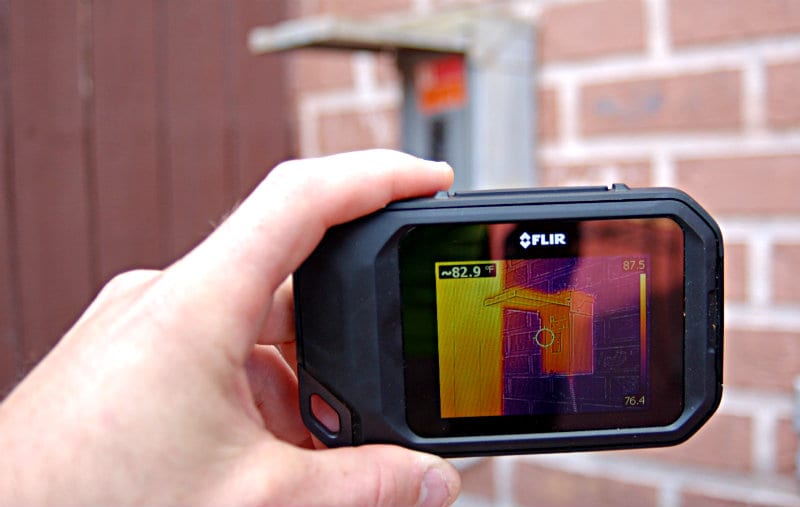
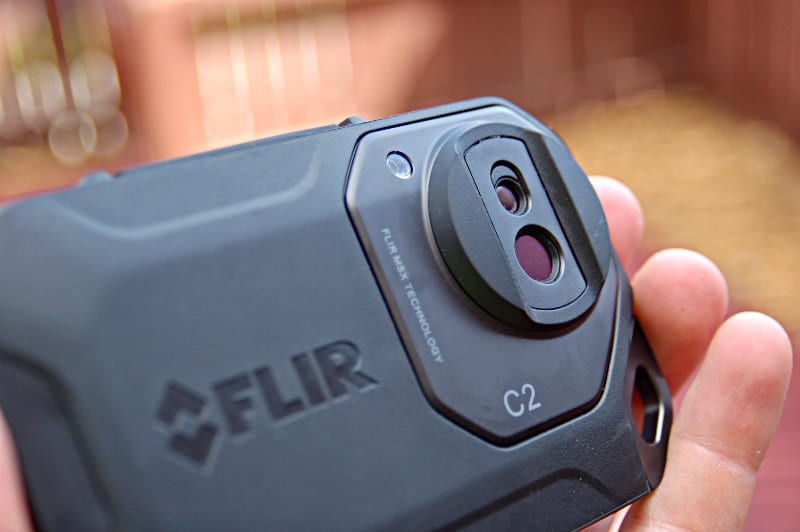
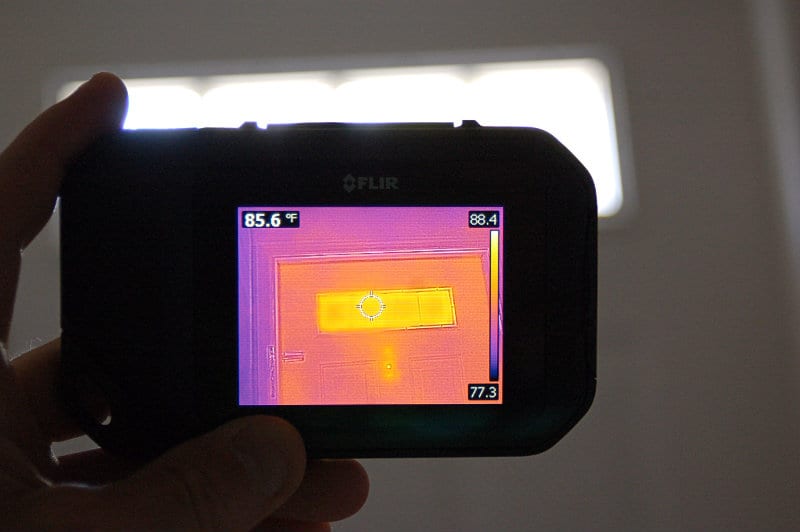
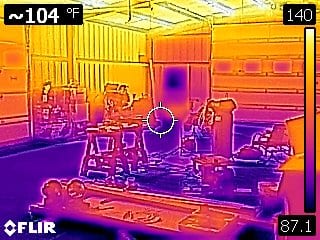
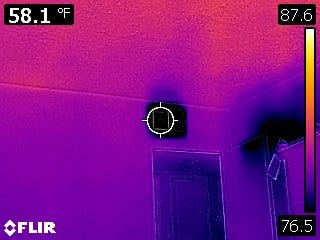
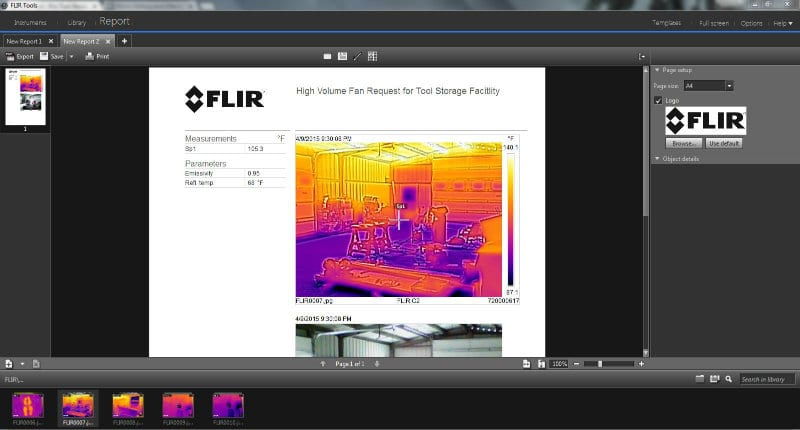



I am a roofer in Denver and depend a lot on finding water logged areas on flat roofs. Do you think the C2 would be a good enough camera for me?
Thanks,
Randy
[…] us MSX – a combination of thermal and visual image that changes the game. We first saw it on the FLIR C2. MSX uses a two camera system to give you hard lines to match up with the thermal image, making […]
I just received the flir C2 a few days ago.I tried out the camera and I liked the fact that the picture is clear,the unit is compact and it seems to work well in viewing hot and cold spots.I did not play around with the software.You do need to download the software since it was not provided with the instruction manual (came with a USB stick) and the manual is not that great to be honest with you.I don’t know how accurate these cameras are since I do not have a laboratory to test the unit but from what I… Read more »